Comandra Rust - Cronartium comandrae
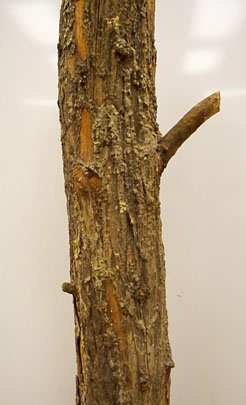
Comandra rust canker on the main stem of pine.
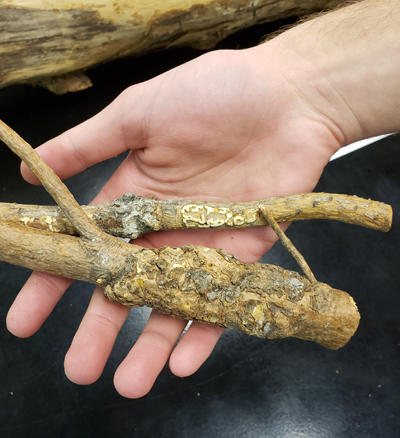
Branches infected with Comandra rust.
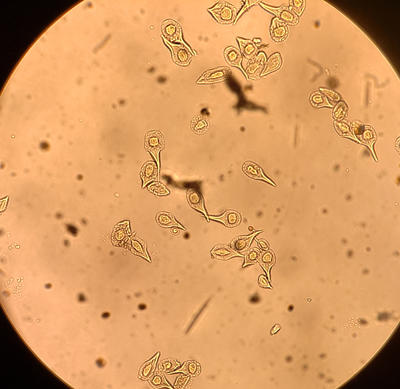
Microscopic view of aeciospores of Comandra rust. The tadpole or snowshoe-shaped aeciospres are different from those of other stem rusts.
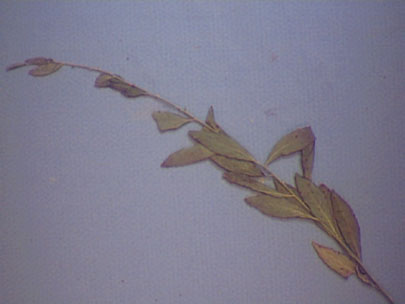
Alternate host is Comandra umbellata - this is a dried specimen of the plant
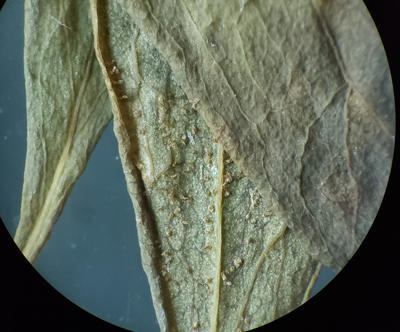
Uredinia followed by telia form on the lower leaf surface of Comandra.
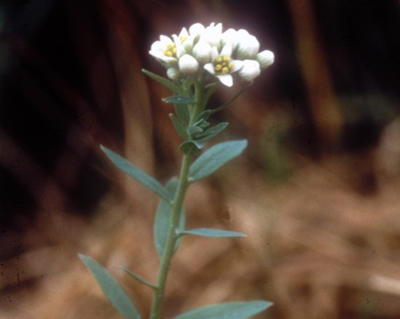
The Comandra plant flowering.
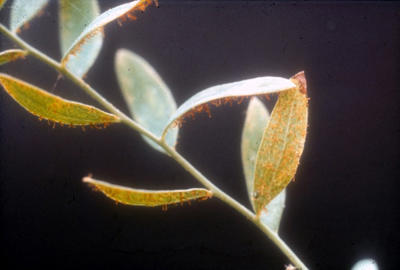
Uredinia and telia form on the bottom of the Comandra leaves. The brown hair-like structures seen here are telial columns.
Sweetfern Rust - Cronartium comptoniae
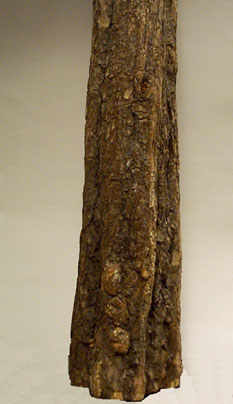
Sweetfern rust on main stem of pine. Infection is restricted to the lower bole of the tree.
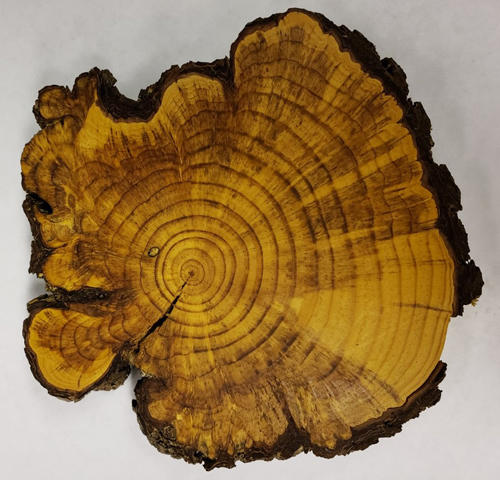
A cross section cut thru the canker showing the many lesions and also the reaction wood (dark colored areas) that formed in the wood behind the cankers
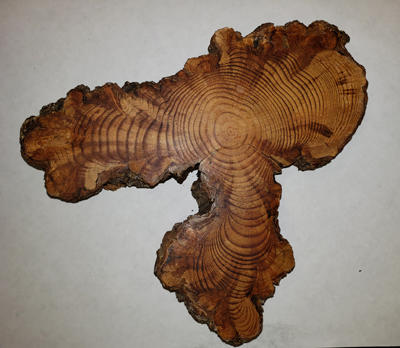
Cross section from the trunk of a jack pine infected with sweetfern rust showing distorted and resin filled main stem.
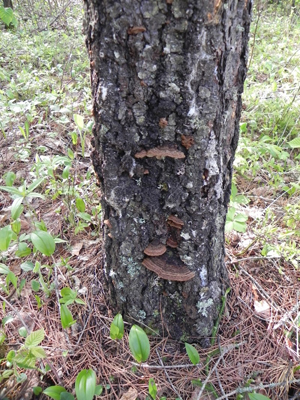
Young jack pine with sweetfern rust infection at the base of the tree and fruiting bodies of Porodaedalea (Phellinus) pini fruiting out of the cankered trunk. Sweetfern rust cankers serve as an entrance point for some heartrot fungi and decay can extend throughout the main stem. Usually these decay fungi attack old growth trees but sweetfern rust cankers produce resinous reaction wood and decay fungi enter the trees as early as 5-8 years old.
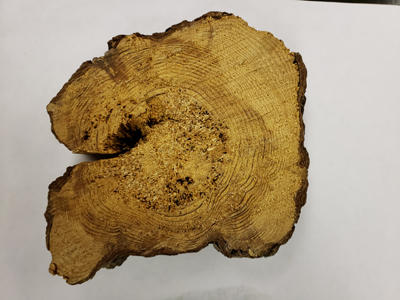
A cross section of a tree with sweetfern rust showing decay by Porodaedalea pini (old name is Phellinus pini).
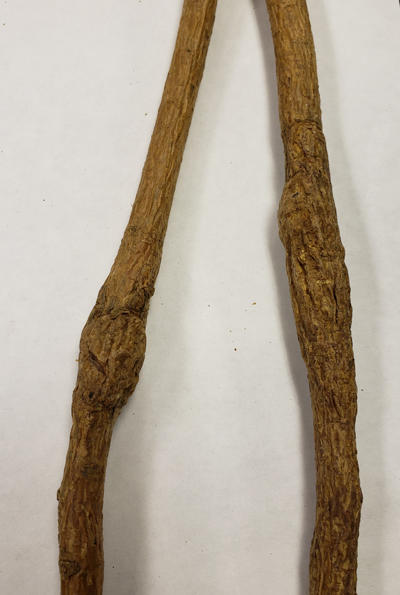
Sweetfern rust infected seedlings. Pycnia would form on the young cankers.
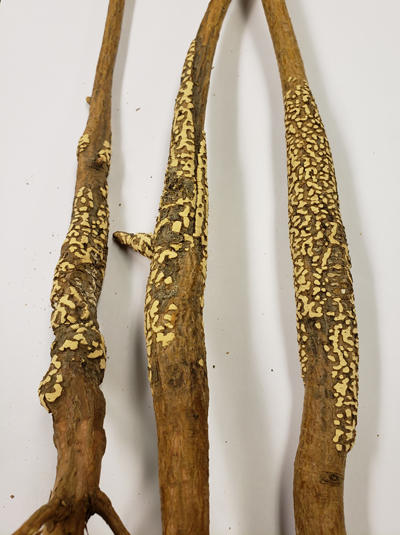
Seedlings infected with sweetfern rust with aecia forming. Aecia form one year afterthe pycnia.
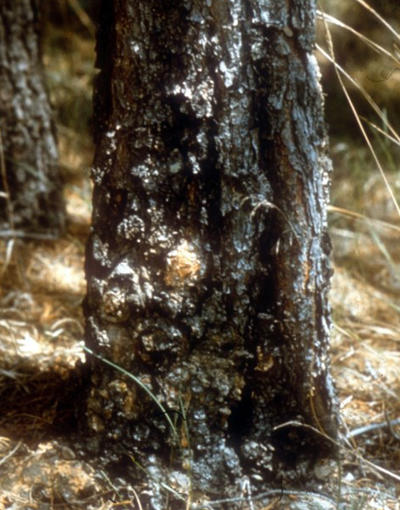
Pycnia and aecia also can form on the edges of older cankers. This photo show aecia, yellow areas, producing aeciospores in the forest on a canker at the base of a tree.
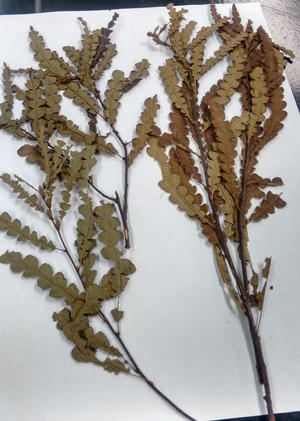
Sweetfern, Comptonia aspenifolia, is an alternate host for this rust.
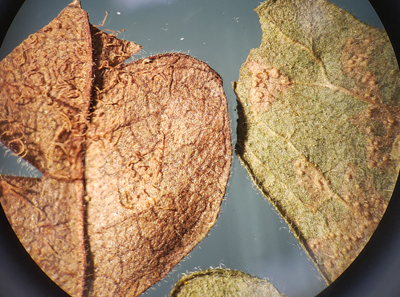
Sweetfern leaf with uredinia is on the right (yellowish round areas) and leaf with telia on the left (brown hair-like structures). Uredinia form in early summer and telia form in late summer and fall.
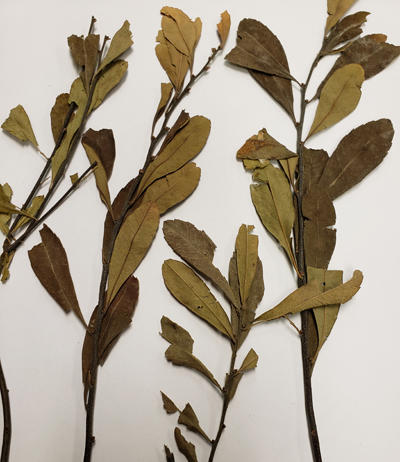
Sweet gale, Myrica gale, is another alternate host for this rust.
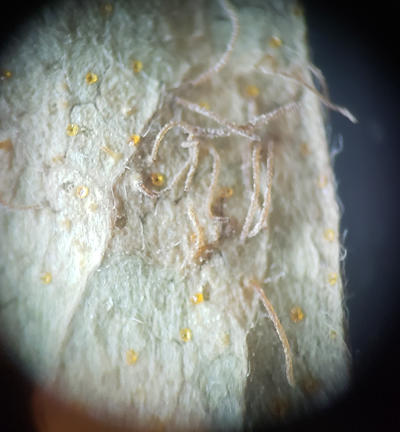
Sweet gale leaf with telia. Yellow droplets are exudates from the leaf and not associated with the rust.
Stalactiform Rust - Cronartium coleosporioides
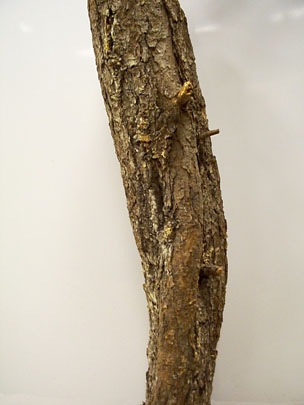
Main stem infection on pine.
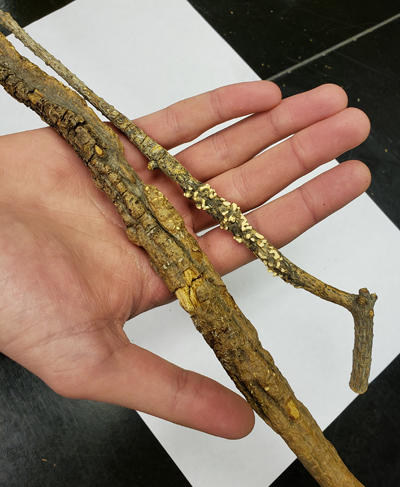
Branches infected by Stalactiform rust.
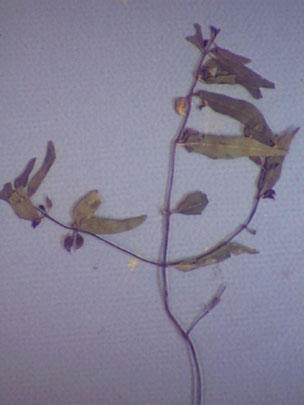
Cowwheat, Melampyrum, is an alternate host.
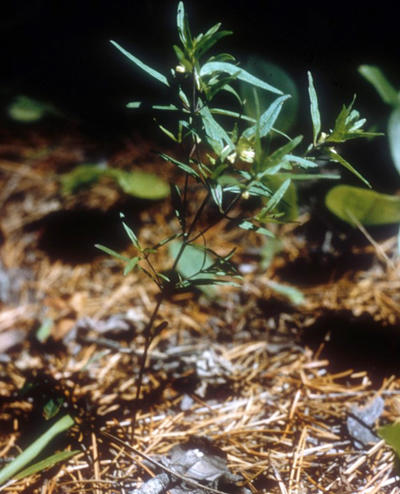
A cowwheat plant in the forest
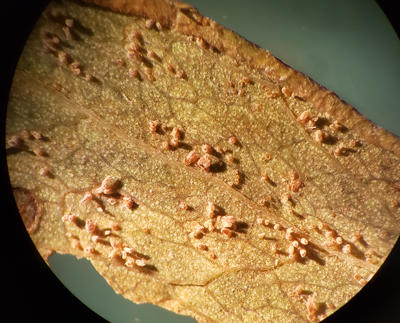
Uredinia followed by telia form on the alternate host. This cowwheat leaf has telia stating to grow.
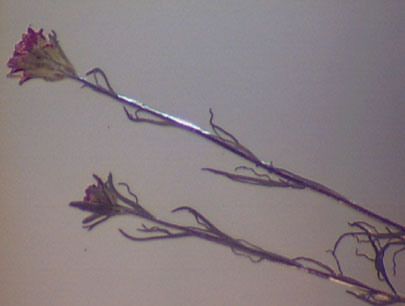
Indian paint brush, Castilleja, is another alternate host.